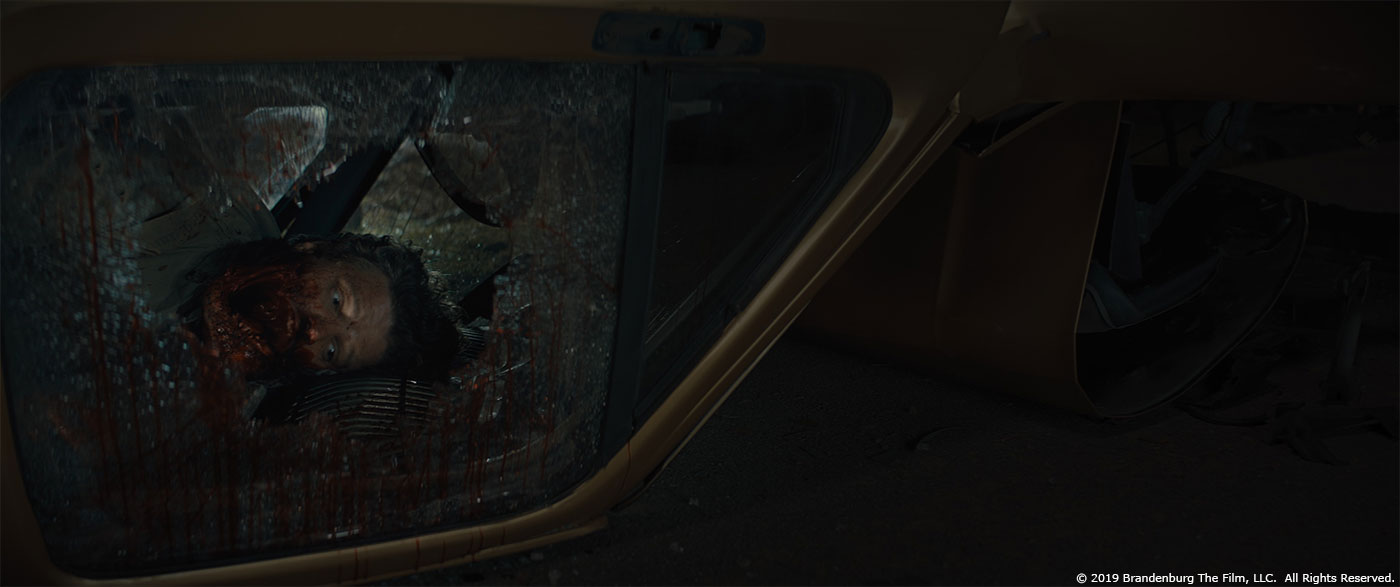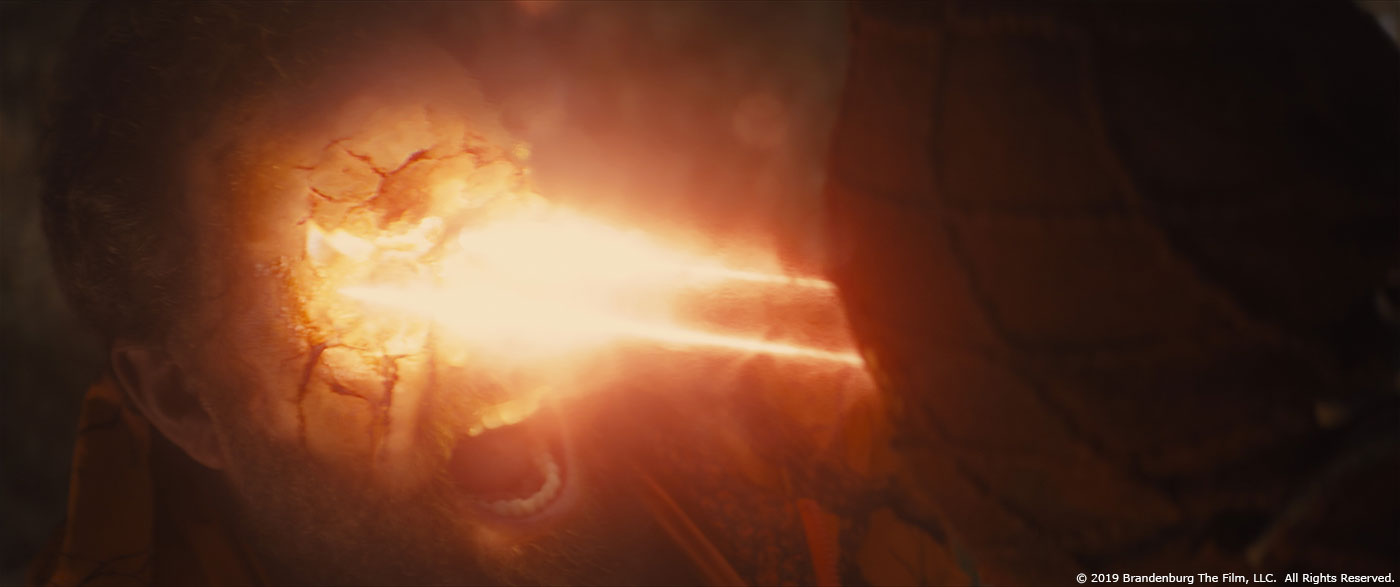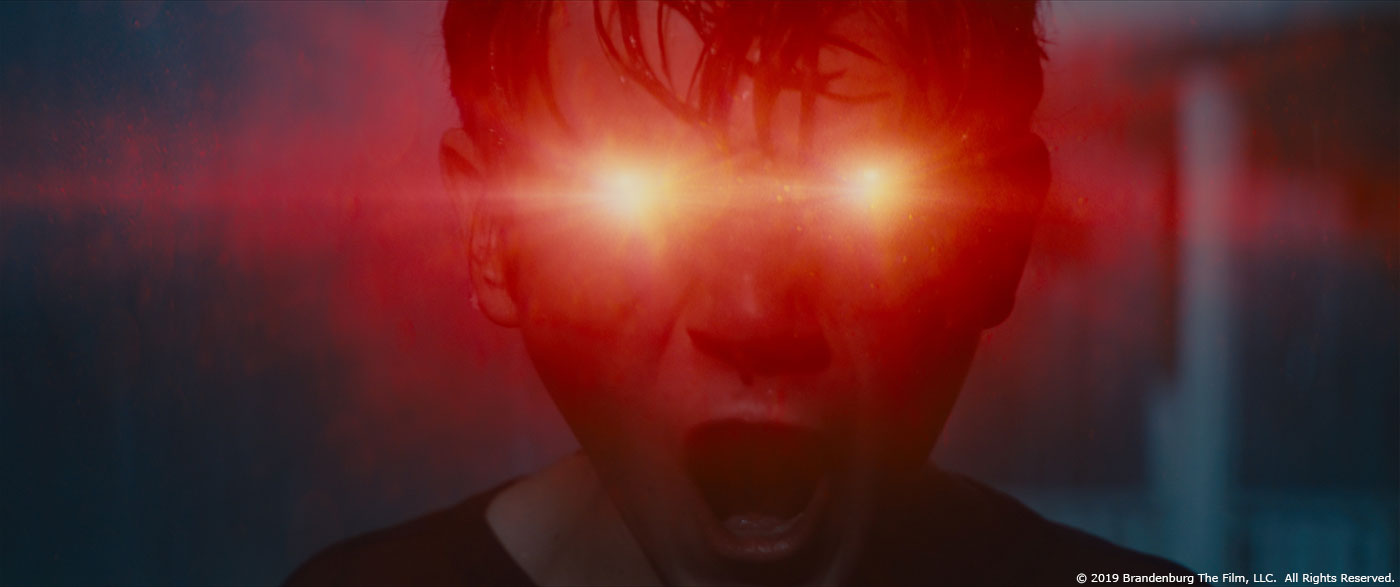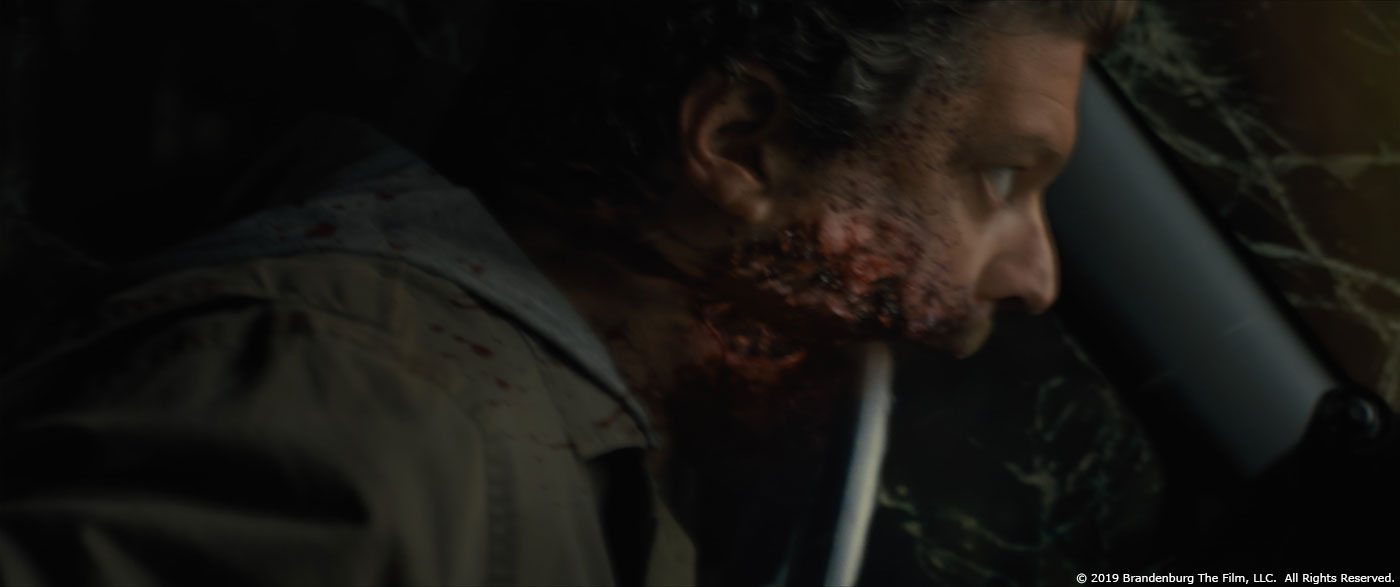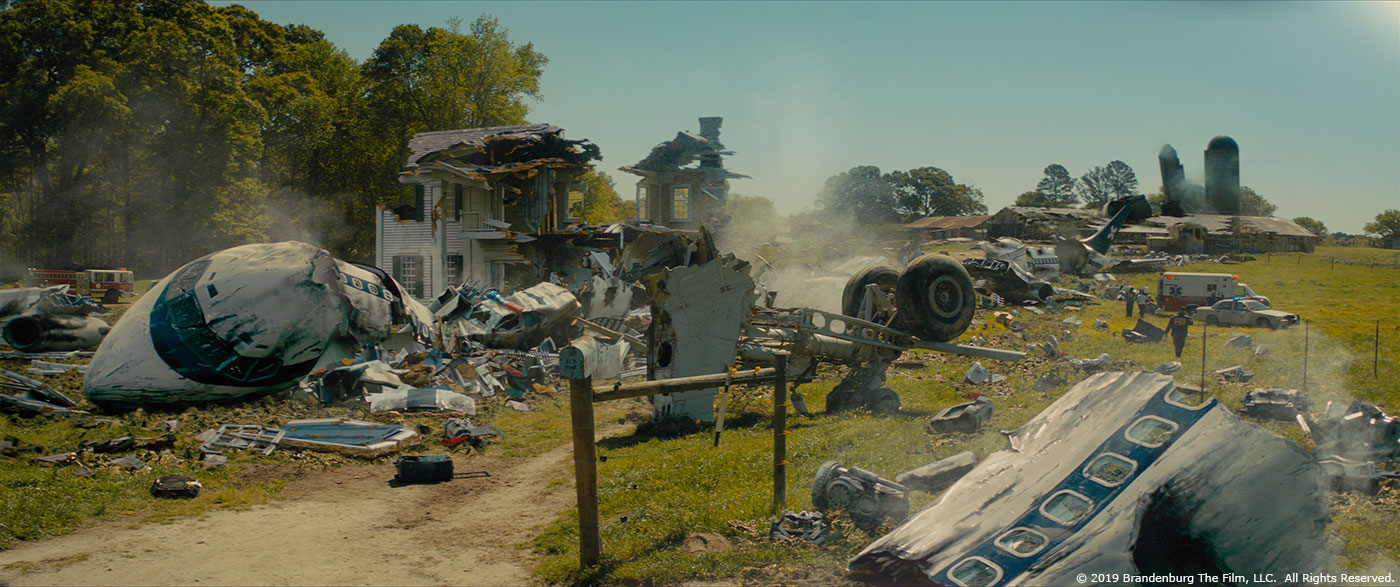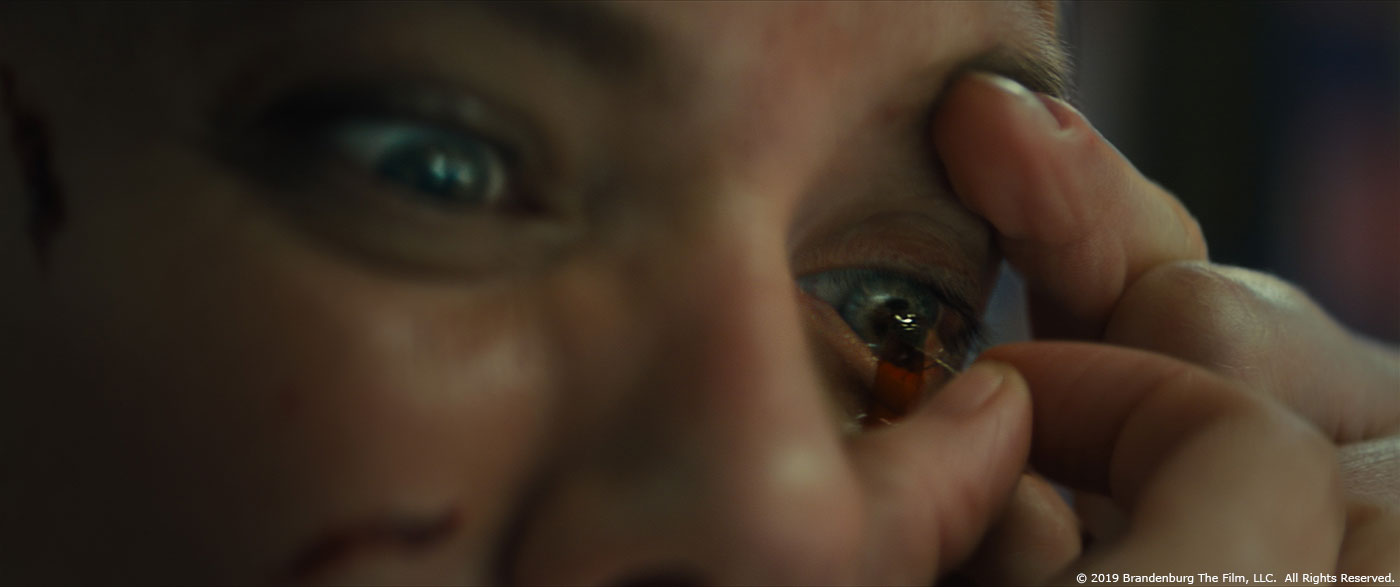Dietrich Hasse started working in visual effects 20 years ago. He has worked on many films like PERCY JACKSON & THE OLYMPIANS: THE LIGHTNING THIEF, IRON MAN 2, THE AVENGERS and IRON MAN 3.
What is your background?
After finishing my studies in industrial design I made my way into animation and visual effects in the late nineties. My main passion and field of expertise has always been animation, and I have worked in leading positions for Peter Jackson’s KING KONG as well as for a number of fully animated feature productions in Germany. However, I also worked as a VFX supervisor for several German and international feature productions, including the recently released BRIGHTBURN. Moreover I’ve done stereoscopic supervision for 3D conversion productions as well as fully animated feature movies.
How did you and Trixter get involved on this show?
Trixter had already worked on GUARDIANS OF THE GALAXY VOL. 2, and it was a very exciting prospect to continue the collaboration with James Gunn on a movie with a completely different style and scale.
How was the collaboration with director David Yarovesky?
David Yarovesky is a very talented director with a clear vision on one hand but also with an open mind for suggestions on the other. Especially in productions with a rather limited budget it is essential to find creative solutions, which usually require unique ideas and contributions from the entire team. Dave was great in digesting those ideas and merging them with his own vision of the movie.
What was their expectations and approach about the visual effects?
BRIGHTBURN is not a VFX-driven movie, so it was clear from the start that the extent of visual effects would be limited to whatever is necessary to support story-telling and suspense. The only effects that were always planned as prominent visual landmarks were Brandon’s heat vision (laser beams) and the speed effect when he rushes through space with hyper-natural speed.
How did you organize the work with your VFX Producer?
Like most movies, BRIGHTBURN went through lots of changes from the moment we received the first script until the delivery of the last shots. So the key for efficiency was communication, keeping everybody in the team up to date. Christine Resch, our VFX producer at Trixter, did an amazing job in tracking each and every updated request or editorial change from the client, and we had daily meetings with our leads in order to make all these changes as transparent as possible to everyone.
How was the work split amongst the Trixter offices?
Almost the complete production was handled in our Berlin facility. However, the tight connection of the Berlin and Munich facilities allows us to easily share resources between both whenever needed. For BRIGHTBURN it turned out to be a huge advantage that artists from Munich could easily help out, using the integrated pipeline and network whenever resources in Berlin were limited.
What kind of references and indications did you receive for the superpowers of Brandon?
Glowing eyes and laser beams are quite common in various superhero worlds, which provided us with a good variety of visual references. For the speed effect we discussed a number of references, including JUMPER, IT and even HARRY POTTER. However, especially for those prominent effects we did a fair bit of additional look development in order to give them the individual Brightburn touch.
How did you design and create the red eyes for Brandon?
As a starting point we used references of existing superhero characters. But since we had a few quite close up shots on his glowing eyes, we needed to add more detail and modulation to the glow in order to create an organic and integrated unique look, especially created for BRIGHTBURN.
Can you explain in detail about the eyes laser beam effects?
We studied quite a few references of laser beams, even footage of lasers hitting the camera chip – only to find out that real lasers are visually absolutely unexciting. So the key for a convincing laser beam design was the proper balance between stylization and integration. They needed to look hyper-natural, so a decent amount of stylization was required. However, in a photoreal environment you can only deviate so much from reality. So we spent quite some time on balancing the level of detail and the dynamics of the lasers.
Can you tell us more about the simulations and animation for the laser beam effect?
Our concept art department had developed a few still frames for the laser design which had been approved by the director. Of course we knew that it’s going to be hard to match the look of a drawing with simulated effects later, but at least it gave us a clear direction for the FX look development. Our two main goals were a) to find the appropriate level of detail, so there would still be structure even in the hot, blown out regions, and b) to find a proper dynamic that sells the extreme amount of energy erupting from his eyes. We tested a number of simulation approaches: volumetric simulations, which produced more realistic details, geometry based solutions, which looked more graphic and stylized but allowed a more detailed control etc. Ultimately we used a combination of different techniques layered on top of each other in order to utilize the best of each.
How did you work with the SFX and stunts teams for the superpowers of Brandon?
The collaboration on set was extraordinary. We had a few meetings prior to shooting with all departments involved, SFX, stunt team, prosthetics, props, etc. and discussed all relevant VFX shots – or even where we might get away without VFX, respectively what would be the most efficient approach. Of course during shooting we needed to change a few of these plans, but we had permanent discussions about the upcoming takes, and all departments were really flexible and cooperative. Again the key for success was communication, and that worked out really well on set.
Can you elaborates about the challenges of his super fast movements?
Dave’s first idea was to create very chunky, non linear movements with a quick succession of spooky poses. While developing the look for these jump moves, we realized that the effect became scarier the faster and shorter the move was. So we spent more time in developing a particular look for the motion trails, which allowed us to give these really fast moves a stylized and unique look. We ended up using a combination of several motion trails with different shutter speeds – ranging from 90° (quarter frame) to 1440″ (4 frames) based on subframe animation in order to add more detail to the arcs of the trails.
Can you tell us more about the digital double creation?
For the digital doubles we used Lidar scans and detailed photogrammetry of the characters. Based on this and the elaborate asset building tools at Trixter it is pretty much a standard procedure to generate a digital double, especially because our doubles were only meant to hold up for wide shots.
How did you create and animate his red cape?
For the wider shots we mostly animated the cape, only in very few cases we ran a cloth simulation on top of the rough animation. For the closer shots we could use a library of life action greenscreen footage, which we could separate and paste onto the CG body.
What was the main challenge with the shots featuring Brandon flying in the air?
In general the VFX challenges in BRIGHTBURN were really diverse, so it’s hard to name a particular main challenge. Also regarding the flying shots the challenges were different: In the house destruction shot Brandon is very small in frame, it’s dark, a huge destruction and Tori in the foreground are catching the eye – but he is still supposed to be prominent. In another shot he is supposed to zip through frame very quickly, but we still need to recognize him. In the hovering shots he shouldn’t look like standing on a box or hanging on wires, so he needs some organic movement, however, this can easily look like a bad camera matchmove. So almost each shot came with an individual challenge.
The movie has really gore deaths. How did you enhance them?
Erica’s death in the freezer is hardly visible, but still very effective: We just see Brandon rushing towards her and cut hard into another scene – hence we didn’t need to enhance anything.
Of course the other deaths needed more attention from our end. When Deever, the police officer, dies, Brandon hits him from the side and kicks him out of frame. The stunt team did their best to yank the actor out of frame with a wire, but the resulting movement still looked soft. That’s why we repositioned Deever frame by frame when he approaches the entrance door in order to enhance the change of direction and make Brandon´s impact look really hard.
For Noah’s (dropping jaw) and Kyle’s death (Brandon pierces his head) we created CG elements for the revealed interior parts of their heads. Obviously quite some rotomation and compositing tricks were necessary to blend those CG parts seamlessly with the life action footage.
The most complex gore shot is probably the one showing Kyle’s head gradually melting from Brandon’s laser beams. On top of the practical takes of the actor’s performance and a collapsing head dummy we needed to create several layers of his skin, underlying tissue and skull in CG in order to reveal them one by one. On top of that the lasers needed to interact appropriately with the head, and a few smaller flames where added to represent the burning fat. Even though a number of elaborate CG layers have been generated for this shot, the main achievement came from compositing.
At the end of the movie, the house is heavily damaged by Brandon. How did you handle those destructions?
The early stages of destruction were added as matte paintings on top of the real house. When Brandon crashes out of the upper window, the complete house including the destruction is CG. In fact the only real part in this shot is Tori running on the foreground gras. Since we needed to stitch two locations anyway throughout the movie – the farmhouse and the barn – we had prepared a full CG farmhouse anyway, and we could perfectly use it as a base for the destruction. However, the final choreography and dynamic of this shot is still quite an achievement, and it went along with several editorial changes. So it took us a number of revisions with the director to get it right.
Can you elaborates about the final sequence in which Brandon is flying with his mom?
One of the challenges in this sequence was the quick transition from the furious, violent moment of Brandon crashing his mother through the roof into the calm moment of them hovering in mid air. We produced quite a detailed post-vis for this sequence and adjusted timing and speed in order to make this moment believable.
The other challenge was in the nature of the hovering shots: Human characters floating in mid air tend to look like hanging on a wire on green screen (which was actually the case). In order to minimise this effect we worked on additional camera moves, relative movements of the characters and subtle layers of clouds passing by.
How did you create the vast environment and the clouds?
During post vis the clouds were represented by rough geometries only, but they helped defining the speed of camera and characters shooting into the sky. Later on the fore- and mid-ground clouds were replaced by CG simulated clouds. Distant clouds, the sky and the ground (where visible) were provided as matte-paintings.
Which sequence or shot was the most challenging?
Among the most challenging sequences were certainly the shots of Brandon melting Kyle’s head. The scene had been shot at daylight, but the lasers were still supposed to stand out as a blinding light. Even though we darkened the original footage, we were still limited in the dynamic range and in selling the lasers as a super hot light source. This obviously also made the look development quite complex.
The destruction shots were rather complex on the 3D side. Even though practical destruction elements had been shot on set, they needed extensive enhancement. So we generated lots of individual CG pieces of wall, roof, windows etc. in order to destruct them digitally. Especially the interior destruction shots were assembled out of several takes, incl. performance plate, practical destruction elements, clean plates etc., which needed to be aligned and synchronized. In addition to the CG simulated layers this also increased the complexity for compositing.
Is there something specific that gives you some really short nights?
The shot of Erica pulling the glass shard out of her eye was assembled out of different plates: the life performance of the actress – obviously without the shard – and a hand pulling the shard out of a dummy head. Even though the dummy head was a very well made reproduction made by the prosthetics company, of course it wasn’t able to match all the subtle facial movements of the actress. So we put a lot of work in blending both plates and trying to preserve as much as possible of the original performance. Obviously the hand contacts, the running liquid and other details needed to be fine tweaked and morphed in order to make all contacts and seems work.
What is your favorite shot or sequence?
I like the shots of Noah’s death in the car – simply jaw dropping!
What is your best memory on this show?
One of my best memories is definitely the great collaboration and team spirit on set. But also working with the great team at Trixter Berlin with Christine Resch as the producer is something I wouldn’t want to miss.
How long have you worked on this show?
From the moment I read the first script until final delivery it took about 15 months.
What’s the VFX shots count?
We worked on 239 shots, 192 of them made it into the final version of the movie.
What was the size of your team?
Specifically on this project we had a team of 64 people, not all of them at the same time, though. Including Trixter’s infrastructure about 80 people were involved.
What is your next project?
Currently a number of international and german VFX productions are in preparation at Trixter, so I’m not exactly sure, which one I’m going to take over.
What are the four movies that gave you the passion for cinema?
Disney’s THE JUNGLE BOOK (1967), SINBAD AND THE EYE OF THE TIGER (1977), JURASSIC PARK (1993) and CORALINE (2009).
A big thanks for your time.
BRIGHTBURN – VFX BREAKDOWN – TRIXTER
WANT TO KNOW MORE?
Trixter: Dedicated page about BRIGHTBURN on Trixter website.
© Vincent Frei – The Art of VFX – 2019


